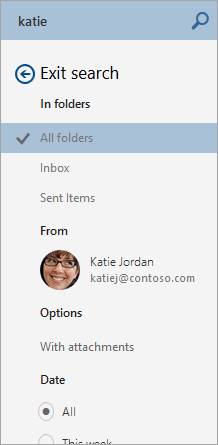Search Mail and People in Outlook on the web
In Outlook on the web, you can use the search bar at the top of the page to search for email messages and people.
Choose your version for instructions
The instructions are slightly different depending on whether you’re using the new Outlook on the web. Choose which version of Outlook on the web you’re using to see the steps that apply to you.
IF YOUR MAILBOX LOOKS LIKE…

See Instructions for the new Outlook on the web.
IF YOUR MAILBOX LOOKS LIKE…

See Instructions for classic Outlook on the web.
Note: If your organization has included its logo in the toolbar, you might see something slightly different than shown above.

 Exit Searchin the Search box or choose any folder in the navigation pane to exit the search.
Exit Searchin the Search box or choose any folder in the navigation pane to exit the search.
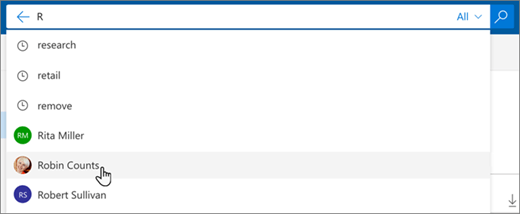
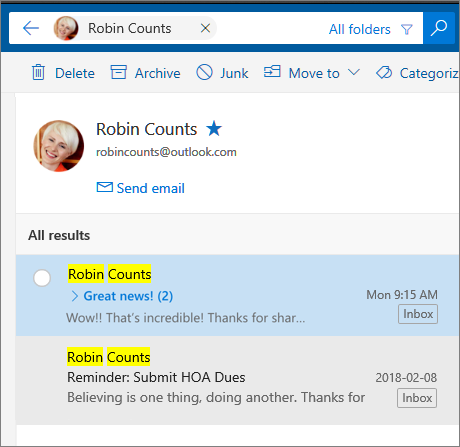
 next to the contact’s name.
next to the contact’s name. at the end of the search box.
at the end of the search box.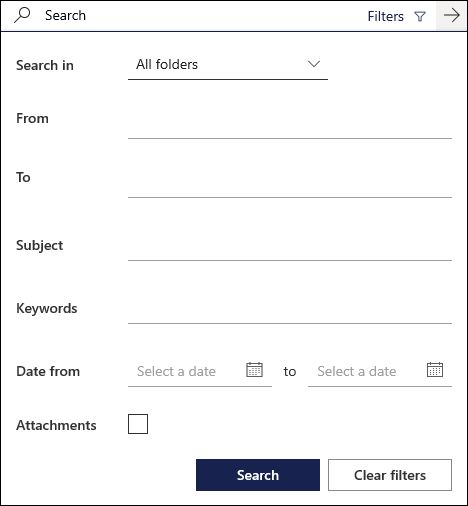
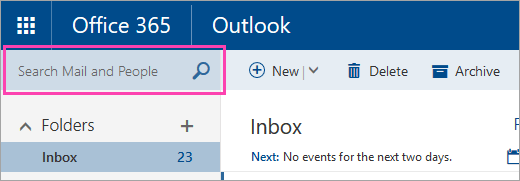
 .
.